Drug Discovery
Clinical Diagnostics
Biomarker Discovery
Personalized Medicine
Instruments
Reagents
Bioinformatics Tools
Services
Mass Spectrometry
Chromatography
Microarray
Electrophoresis
Research Institutions
Pharmaceutical Companies
Academic Institutions
Clinical Laboratories
North America
Europe
South America
Asia Pacific
Middle East and Africa
North America Outlook (USD Billion, 2019-2035)
North America Proteomics Market by Application Type
Drug Discovery
Clinical Diagnostics
Biomarker Discovery
Personalized Medicine
North America Proteomics Market by Product Type
Instruments
Reagents
Bioinformatics Tools
Services
North America Proteomics Market by Technology Type
Mass Spectrometry
Chromatography
Microarray
Electrophoresis
North America Proteomics Market by End Use Type
Research Institutions
Pharmaceutical Companies
Academic Institutions
Clinical Laboratories
North America Proteomics Market by Regional Type
US
Canada
US Outlook (USD Billion, 2019-2035)
US Proteomics Market by Application Type
Drug Discovery
Clinical Diagnostics
Biomarker Discovery
Personalized Medicine
US Proteomics Market by Product Type
Instruments
Reagents
Bioinformatics Tools
Services
US Proteomics Market by Technology Type
Mass Spectrometry
Chromatography
Microarray
Electrophoresis
US Proteomics Market by End Use Type
Research Institutions
Pharmaceutical Companies
Academic Institutions
Clinical Laboratories
CANADA Outlook (USD Billion, 2019-2035)
CANADA Proteomics Market by Application Type
Drug Discovery
Clinical Diagnostics
Biomarker Discovery
Personalized Medicine
CANADA Proteomics Market by Product Type
Instruments
Reagents
Bioinformatics Tools
Services
CANADA Proteomics Market by Technology Type
Mass Spectrometry
Chromatography
Microarray
Electrophoresis
CANADA Proteomics Market by End Use Type
Research Institutions
Pharmaceutical Companies
Academic Institutions
Clinical Laboratories
Europe Outlook (USD Billion, 2019-2035)
Europe Proteomics Market by Application Type
Drug Discovery
Clinical Diagnostics
Biomarker Discovery
Personalized Medicine
Europe Proteomics Market by Product Type
Instruments
Reagents
Bioinformatics Tools
Services
Europe Proteomics Market by Technology Type
Mass Spectrometry
Chromatography
Microarray
Electrophoresis
Europe Proteomics Market by End Use Type
Research Institutions
Pharmaceutical Companies
Academic Institutions
Clinical Laboratories
Europe Proteomics Market by Regional Type
Germany
UK
France
Russia
Italy
Spain
Rest of Europe
GERMANY Outlook (USD Billion, 2019-2035)
GERMANY Proteomics Market by Application Type
Drug Discovery
Clinical Diagnostics
Biomarker Discovery
Personalized Medicine
GERMANY Proteomics Market by Product Type
Instruments
Reagents
Bioinformatics Tools
Services
GERMANY Proteomics Market by Technology Type
Mass Spectrometry
Chromatography
Microarray
Electrophoresis
GERMANY Proteomics Market by End Use Type
Research Institutions
Pharmaceutical Companies
Academic Institutions
Clinical Laboratories
UK Outlook (USD Billion, 2019-2035)
UK Proteomics Market by Application Type
Drug Discovery
Clinical Diagnostics
Biomarker Discovery
Personalized Medicine
UK Proteomics Market by Product Type
Instruments
Reagents
Bioinformatics Tools
Services
UK Proteomics Market by Technology Type
Mass Spectrometry
Chromatography
Microarray
Electrophoresis
UK Proteomics Market by End Use Type
Research Institutions
Pharmaceutical Companies
Academic Institutions
Clinical Laboratories
FRANCE Outlook (USD Billion, 2019-2035)
FRANCE Proteomics Market by Application Type
Drug Discovery
Clinical Diagnostics
Biomarker Discovery
Personalized Medicine
FRANCE Proteomics Market by Product Type
Instruments
Reagents
Bioinformatics Tools
Services
FRANCE Proteomics Market by Technology Type
Mass Spectrometry
Chromatography
Microarray
Electrophoresis
FRANCE Proteomics Market by End Use Type
Research Institutions
Pharmaceutical Companies
Academic Institutions
Clinical Laboratories
RUSSIA Outlook (USD Billion, 2019-2035)
RUSSIA Proteomics Market by Application Type
Drug Discovery
Clinical Diagnostics
Biomarker Discovery
Personalized Medicine
RUSSIA Proteomics Market by Product Type
Instruments
Reagents
Bioinformatics Tools
Services
RUSSIA Proteomics Market by Technology Type
Mass Spectrometry
Chromatography
Microarray
Electrophoresis
RUSSIA Proteomics Market by End Use Type
Research Institutions
Pharmaceutical Companies
Academic Institutions
Clinical Laboratories
ITALY Outlook (USD Billion, 2019-2035)
ITALY Proteomics Market by Application Type
Drug Discovery
Clinical Diagnostics
Biomarker Discovery
Personalized Medicine
ITALY Proteomics Market by Product Type
Instruments
Reagents
Bioinformatics Tools
Services
ITALY Proteomics Market by Technology Type
Mass Spectrometry
Chromatography
Microarray
Electrophoresis
ITALY Proteomics Market by End Use Type
Research Institutions
Pharmaceutical Companies
Academic Institutions
Clinical Laboratories
SPAIN Outlook (USD Billion, 2019-2035)
SPAIN Proteomics Market by Application Type
Drug Discovery
Clinical Diagnostics
Biomarker Discovery
Personalized Medicine
SPAIN Proteomics Market by Product Type
Instruments
Reagents
Bioinformatics Tools
Services
SPAIN Proteomics Market by Technology Type
Mass Spectrometry
Chromatography
Microarray
Electrophoresis
SPAIN Proteomics Market by End Use Type
Research Institutions
Pharmaceutical Companies
Academic Institutions
Clinical Laboratories
REST OF EUROPE Outlook (USD Billion, 2019-2035)
REST OF EUROPE Proteomics Market by Application Type
Drug Discovery
Clinical Diagnostics
Biomarker Discovery
Personalized Medicine
REST OF EUROPE Proteomics Market by Product Type
Instruments
Reagents
Bioinformatics Tools
Services
REST OF EUROPE Proteomics Market by Technology Type
Mass Spectrometry
Chromatography
Microarray
Electrophoresis
REST OF EUROPE Proteomics Market by End Use Type
Research Institutions
Pharmaceutical Companies
Academic Institutions
Clinical Laboratories
APAC Outlook (USD Billion, 2019-2035)
APAC Proteomics Market by Application Type
Drug Discovery
Clinical Diagnostics
Biomarker Discovery
Personalized Medicine
APAC Proteomics Market by Product Type
Instruments
Reagents
Bioinformatics Tools
Services
APAC Proteomics Market by Technology Type
Mass Spectrometry
Chromatography
Microarray
Electrophoresis
APAC Proteomics Market by End Use Type
Research Institutions
Pharmaceutical Companies
Academic Institutions
Clinical Laboratories
APAC Proteomics Market by Regional Type
China
India
Japan
South Korea
Malaysia
Thailand
Indonesia
Rest of APAC
CHINA Outlook (USD Billion, 2019-2035)
CHINA Proteomics Market by Application Type
Drug Discovery
Clinical Diagnostics
Biomarker Discovery
Personalized Medicine
CHINA Proteomics Market by Product Type
Instruments
Reagents
Bioinformatics Tools
Services
CHINA Proteomics Market by Technology Type
Mass Spectrometry
Chromatography
Microarray
Electrophoresis
CHINA Proteomics Market by End Use Type
Research Institutions
Pharmaceutical Companies
Academic Institutions
Clinical Laboratories
INDIA Outlook (USD Billion, 2019-2035)
INDIA Proteomics Market by Application Type
Drug Discovery
Clinical Diagnostics
Biomarker Discovery
Personalized Medicine
INDIA Proteomics Market by Product Type
Instruments
Reagents
Bioinformatics Tools
Services
INDIA Proteomics Market by Technology Type
Mass Spectrometry
Chromatography
Microarray
Electrophoresis
INDIA Proteomics Market by End Use Type
Research Institutions
Pharmaceutical Companies
Academic Institutions
Clinical Laboratories
JAPAN Outlook (USD Billion, 2019-2035)
JAPAN Proteomics Market by Application Type
Drug Discovery
Clinical Diagnostics
Biomarker Discovery
Personalized Medicine
JAPAN Proteomics Market by Product Type
Instruments
Reagents
Bioinformatics Tools
Services
JAPAN Proteomics Market by Technology Type
Mass Spectrometry
Chromatography
Microarray
Electrophoresis
JAPAN Proteomics Market by End Use Type
Research Institutions
Pharmaceutical Companies
Academic Institutions
Clinical Laboratories
SOUTH KOREA Outlook (USD Billion, 2019-2035)
SOUTH KOREA Proteomics Market by Application Type
Drug Discovery
Clinical Diagnostics
Biomarker Discovery
Personalized Medicine
SOUTH KOREA Proteomics Market by Product Type
Instruments
Reagents
Bioinformatics Tools
Services
SOUTH KOREA Proteomics Market by Technology Type
Mass Spectrometry
Chromatography
Microarray
Electrophoresis
SOUTH KOREA Proteomics Market by End Use Type
Research Institutions
Pharmaceutical Companies
Academic Institutions
Clinical Laboratories
MALAYSIA Outlook (USD Billion, 2019-2035)
MALAYSIA Proteomics Market by Application Type
Drug Discovery
Clinical Diagnostics
Biomarker Discovery
Personalized Medicine
MALAYSIA Proteomics Market by Product Type
Instruments
Reagents
Bioinformatics Tools
Services
MALAYSIA Proteomics Market by Technology Type
Mass Spectrometry
Chromatography
Microarray
Electrophoresis
MALAYSIA Proteomics Market by End Use Type
Research Institutions
Pharmaceutical Companies
Academic Institutions
Clinical Laboratories
THAILAND Outlook (USD Billion, 2019-2035)
THAILAND Proteomics Market by Application Type
Drug Discovery
Clinical Diagnostics
Biomarker Discovery
Personalized Medicine
THAILAND Proteomics Market by Product Type
Instruments
Reagents
Bioinformatics Tools
Services
THAILAND Proteomics Market by Technology Type
Mass Spectrometry
Chromatography
Microarray
Electrophoresis
THAILAND Proteomics Market by End Use Type
Research Institutions
Pharmaceutical Companies
Academic Institutions
Clinical Laboratories
INDONESIA Outlook (USD Billion, 2019-2035)
INDONESIA Proteomics Market by Application Type
Drug Discovery
Clinical Diagnostics
Biomarker Discovery
Personalized Medicine
INDONESIA Proteomics Market by Product Type
Instruments
Reagents
Bioinformatics Tools
Services
INDONESIA Proteomics Market by Technology Type
Mass Spectrometry
Chromatography
Microarray
Electrophoresis
INDONESIA Proteomics Market by End Use Type
Research Institutions
Pharmaceutical Companies
Academic Institutions
Clinical Laboratories
REST OF APAC Outlook (USD Billion, 2019-2035)
REST OF APAC Proteomics Market by Application Type
Drug Discovery
Clinical Diagnostics
Biomarker Discovery
Personalized Medicine
REST OF APAC Proteomics Market by Product Type
Instruments
Reagents
Bioinformatics Tools
Services
REST OF APAC Proteomics Market by Technology Type
Mass Spectrometry
Chromatography
Microarray
Electrophoresis
REST OF APAC Proteomics Market by End Use Type
Research Institutions
Pharmaceutical Companies
Academic Institutions
Clinical Laboratories
South America Outlook (USD Billion, 2019-2035)
South America Proteomics Market by Application Type
Drug Discovery
Clinical Diagnostics
Biomarker Discovery
Personalized Medicine
South America Proteomics Market by Product Type
Instruments
Reagents
Bioinformatics Tools
Services
South America Proteomics Market by Technology Type
Mass Spectrometry
Chromatography
Microarray
Electrophoresis
South America Proteomics Market by End Use Type
Research Institutions
Pharmaceutical Companies
Academic Institutions
Clinical Laboratories
South America Proteomics Market by Regional Type
Brazil
Mexico
Argentina
Rest of South America
BRAZIL Outlook (USD Billion, 2019-2035)
BRAZIL Proteomics Market by Application Type
Drug Discovery
Clinical Diagnostics
Biomarker Discovery
Personalized Medicine
BRAZIL Proteomics Market by Product Type
Instruments
Reagents
Bioinformatics Tools
Services
BRAZIL Proteomics Market by Technology Type
Mass Spectrometry
Chromatography
Microarray
Electrophoresis
BRAZIL Proteomics Market by End Use Type
Research Institutions
Pharmaceutical Companies
Academic Institutions
Clinical Laboratories
MEXICO Outlook (USD Billion, 2019-2035)
MEXICO Proteomics Market by Application Type
Drug Discovery
Clinical Diagnostics
Biomarker Discovery
Personalized Medicine
MEXICO Proteomics Market by Product Type
Instruments
Reagents
Bioinformatics Tools
Services
MEXICO Proteomics Market by Technology Type
Mass Spectrometry
Chromatography
Microarray
Electrophoresis
MEXICO Proteomics Market by End Use Type
Research Institutions
Pharmaceutical Companies
Academic Institutions
Clinical Laboratories
ARGENTINA Outlook (USD Billion, 2019-2035)
ARGENTINA Proteomics Market by Application Type
Drug Discovery
Clinical Diagnostics
Biomarker Discovery
Personalized Medicine
ARGENTINA Proteomics Market by Product Type
Instruments
Reagents
Bioinformatics Tools
Services
ARGENTINA Proteomics Market by Technology Type
Mass Spectrometry
Chromatography
Microarray
Electrophoresis
ARGENTINA Proteomics Market by End Use Type
Research Institutions
Pharmaceutical Companies
Academic Institutions
Clinical Laboratories
REST OF SOUTH AMERICA Outlook (USD Billion, 2019-2035)
REST OF SOUTH AMERICA Proteomics Market by Application Type
Drug Discovery
Clinical Diagnostics
Biomarker Discovery
Personalized Medicine
REST OF SOUTH AMERICA Proteomics Market by Product Type
Instruments
Reagents
Bioinformatics Tools
Services
REST OF SOUTH AMERICA Proteomics Market by Technology Type
Mass Spectrometry
Chromatography
Microarray
Electrophoresis
REST OF SOUTH AMERICA Proteomics Market by End Use Type
Research Institutions
Pharmaceutical Companies
Academic Institutions
Clinical Laboratories
MEA Outlook (USD Billion, 2019-2035)
MEA Proteomics Market by Application Type
Drug Discovery
Clinical Diagnostics
Biomarker Discovery
Personalized Medicine
MEA Proteomics Market by Product Type
Instruments
Reagents
Bioinformatics Tools
Services
MEA Proteomics Market by Technology Type
Mass Spectrometry
Chromatography
Microarray
Electrophoresis
MEA Proteomics Market by End Use Type
Research Institutions
Pharmaceutical Companies
Academic Institutions
Clinical Laboratories
MEA Proteomics Market by Regional Type
GCC Countries
South Africa
Rest of MEA
GCC COUNTRIES Outlook (USD Billion, 2019-2035)
GCC COUNTRIES Proteomics Market by Application Type
Drug Discovery
Clinical Diagnostics
Biomarker Discovery
Personalized Medicine
GCC COUNTRIES Proteomics Market by Product Type
Instruments
Reagents
Bioinformatics Tools
Services
GCC COUNTRIES Proteomics Market by Technology Type
Mass Spectrometry
Chromatography
Microarray
Electrophoresis
GCC COUNTRIES Proteomics Market by End Use Type
Research Institutions
Pharmaceutical Companies
Academic Institutions
Clinical Laboratories
SOUTH AFRICA Outlook (USD Billion, 2019-2035)
SOUTH AFRICA Proteomics Market by Application Type
Drug Discovery
Clinical Diagnostics
Biomarker Discovery
Personalized Medicine
SOUTH AFRICA Proteomics Market by Product Type
Instruments
Reagents
Bioinformatics Tools
Services
SOUTH AFRICA Proteomics Market by Technology Type
Mass Spectrometry
Chromatography
Microarray
Electrophoresis
SOUTH AFRICA Proteomics Market by End Use Type
Research Institutions
Pharmaceutical Companies
Academic Institutions
Clinical Laboratories
REST OF MEA Outlook (USD Billion, 2019-2035)
REST OF MEA Proteomics Market by Application Type
Drug Discovery
Clinical Diagnostics
Biomarker Discovery
Personalized Medicine
REST OF MEA Proteomics Market by Product Type
Instruments
Reagents
Bioinformatics Tools
Services
REST OF MEA Proteomics Market by Technology Type
Mass Spectrometry
Chromatography
Microarray
Electrophoresis
REST OF MEA Proteomics Market by End Use Type
Research Institutions
Pharmaceutical Companies
Academic Institutions
Clinical Laboratories

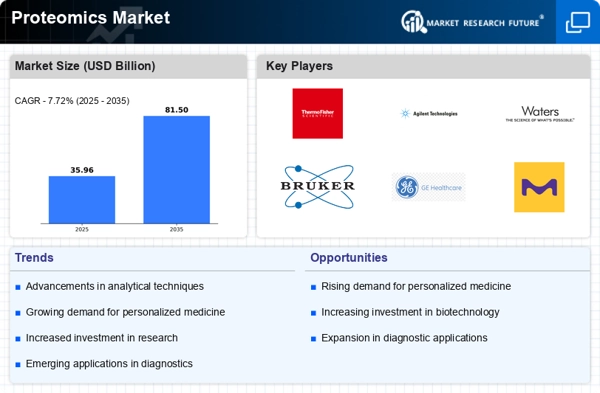
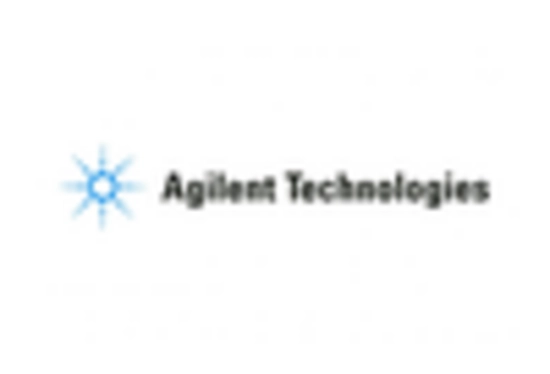
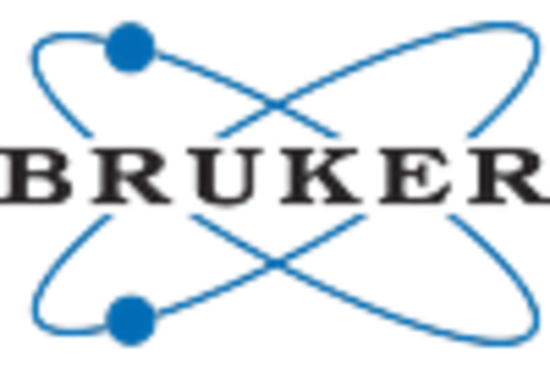
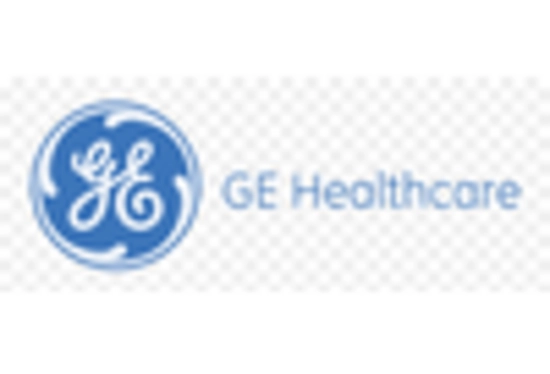


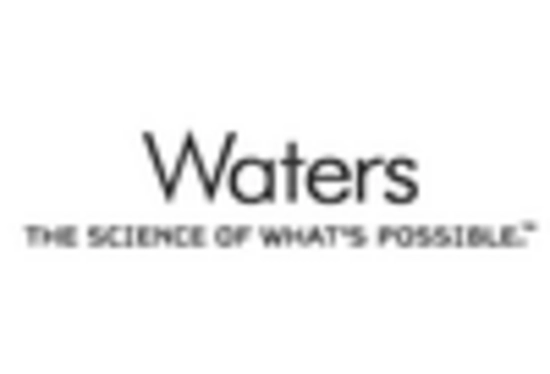

Leave a Comment